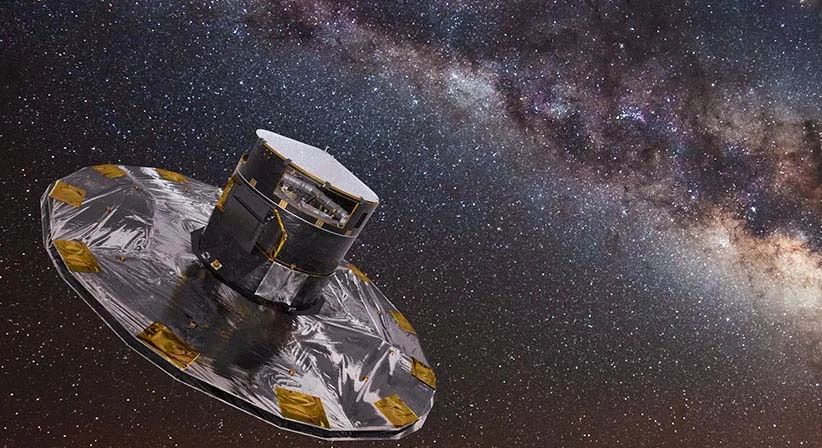Gaia


Making an accurate three-dimensional map of the Milky Way (ESA)

Launched in December 2013, Gaia is a European Space Agency (ESA) satellite designed to carry out astrometry. The mission's main objective is to make the largest and most accurate three-dimensional map of our galaxy by observing more than a billion stars.
Gaia measures the position and motion of stars with high precision, providing insight into the past and present state of the formation and evolution of the Milky Way. During the first five years of the mission, Gaia observed each star about 70 times. In addition to astrometric measurements, Gaia's observations allow the detection and discovery of exoplanets, asteroids within our Solar System, and new brown dwarfs, supernovae, and distant quasars.
Data from the Gaia mission have already been published several times, providing valuable information on the positions, brightnesses, distances, and proper motions of some 1.8 billion stars.
Acknowledgements: This work was (partially) supported by the Spanish MICIN/AEI/10.13039/501100011033 and by "ERDF A way of making Europe" by the European Union through grants PID2021-122842OB-C21, RTI2018-095076-B-C21 (MCI/AEI/FEDER, EU), ESP2016-80079-C2-1-R (MINECO/FEDER, EU), ESP2014-55996-C2-1-R (MINECO/FEDER, EU). It is also supported by PDC2021-121059-C21 (MICIN/AEI/10.13039/501100011033 Next Generation EU/PRTR).
THE IEEC CONTRIBUTION
The Gaia group at the IEEC is in charge of one of the most challenging aspects of the mission: the process of managing and reducing the data to obtain the final Gaia catalogue. The Institute has a leading role in the Gaia Data Processing and Analysis Consortium (DPAC), and is also involved in performing simulations, mainly of data processing and photometry.
With the support of




